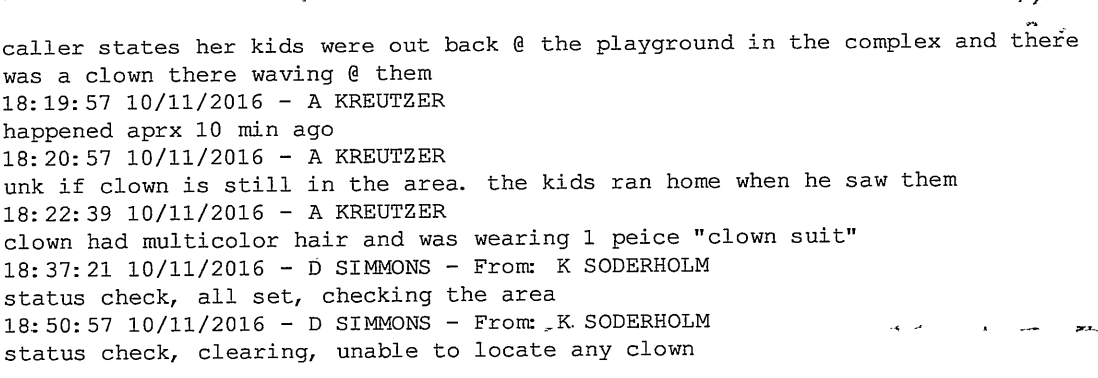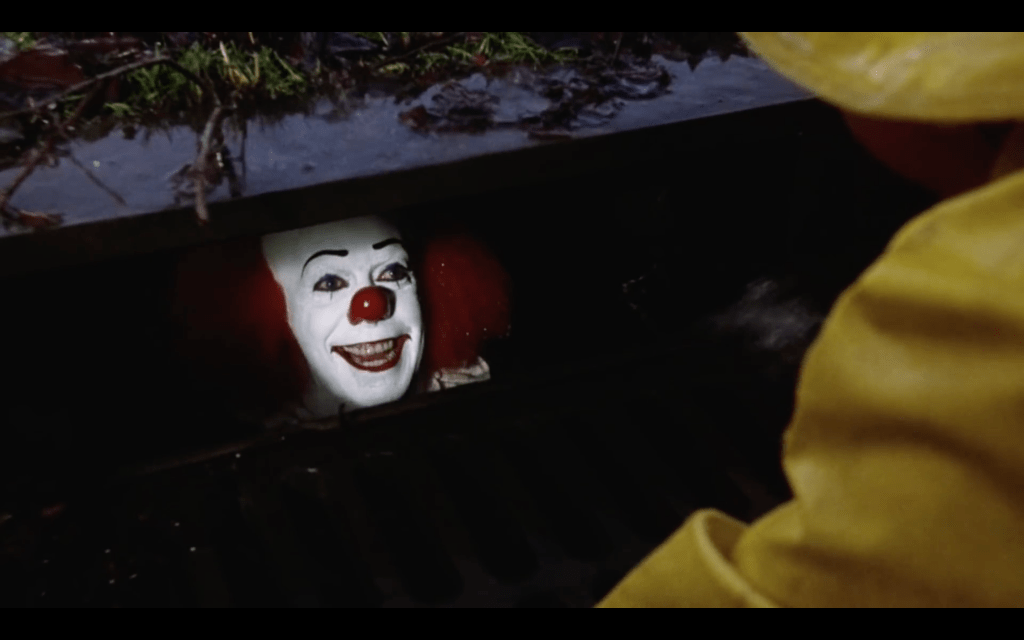Not long ago, United States law enforcement officials were presented with a rising threat: that of frightening clowns.
On October 4, 2016, the Joint Regional Intelligence Center—”a cooperative effort between federal, state, and local law enforcement and public safety agencies to centralize the intake, analysis, synthesis, and appropriate dissemination of terrorism-related threat intelligence for the greater Los Angeles region”—issued an ominous notification, obtained by Motherboard from police in Dallas, Texas via a public-records request. (You can read it in full here.)
Videos by VICE
Under the subject line “Clown Sightings Cause Concern in Multiple States, Not Connected to Credible, Organized Violent Plotting,” a JRIC analysis warned that “dozens of sightings of people dressed as menacing clowns, often in dark or secluded areas, have been reported to police and news media nationwide.” While allowing that it was not aware of any “specific, credible threat involving clown sightings, including any organized criminal or terrorist plotting” and noting that the only clown-related fatality it was aware of involved violence against, not by a clown—a high school sophomore in Pennsylvania was fatally stabbed while wearing a clown-like mask—JRIC had a crucial message for police:
“Law enforcement personnel investigating reports of suspicious clowns should be aware they may sometimes carry items which could be used as weapons.”
JRIC was not alone.
Recently, the Guardian reported on a 14-page document created by Washington D.C.’s Metropolitan Police, which it obtained from Distributed Denial of Secrets, which for its part was redistributing documents acquired by the ransomware group Babuk. Titled “Social Media Clown Threats” and dated to October 2016, it outlined the police monitoring threats posed by clowns—noting, for example, that the Instagram user “snappytheclown_” had posted an image of men in clown outfits alongside text naming two area schools and warning of a coming attack. (“The attack will be Monday at 3.30 PM after I prove you will join me in humanity’s annihilation.”) D.C. police, according to the Guardian, looked into incidents of children bringing clown masks to school and claiming to have been chased by clowns, and attempted to get warrants to unmask the forces behind clown-themed Instagram accounts.
Do you have information about the law enforcement response to the clown menace? We would love to hear from you. Contact the reporter at tim.marchman@vice.com. For extra security, download the Signal app to a non-work device and text us there at 267-713-9832.
Meanwhile, as journalist Ashley Feinberg reported for Deadspin at the time, schools across the country were responding to persistent reports of clowns lurking, being creepy, and generally hanging out by issuing warnings and advice. Members of various communities were made aware of widespread threats on the lines of “The Crazy Clown will come to kill people at X school on X date,” and told to report clown sightings and definitely not consider dressing as a clown as a prank, especially if weapons were involved. One Colorado district attorney alerted the public to the fact that seven Alabama clowns were facing charges for making “terroristic clown threats” under an image of Tim Curry playing Pennywise the Clown.
Responses to public-records requests filed by Motherboard hint at the scope of the clown menace. Police in Ithaca, New York, for example, investigated children being scared by a clown who was waving at them:


Police in Syracuse, New York, for their part, had their hands full. A clown army chased one young man through the streets:

Another clown whose suspicious activities were reported to police turned out to be a child responding to the clown threat by himself becoming an armed clown vigilante:

In yet another incident, young clowns were seen in the local mall, near a Cheesecake Factory, and were asked to leave.
Even as Los Angeles-area terrorism specialists and D.C. police analyzed the threat, though, and upstate New York cops confronted it, other departments across the country were, it appears, simply sitting on their hands.
Motherboard recently asked police across the U.S. for specific clown-related records from fall 2016. Departments in Amherst, Austin, Champaign, Chicago, Columbus, Fort Worth, Houston, Jacksonville, Lansing, Newark, Phoenix, San Francisco, and San Jose, though, reported that diligent searches revealed no records of a response to the clown menace, no surveillance of clown-themed social media accounts, and no comprehensive analyses of the issue. Left unchecked, the clowns have flourished, raising the question of just what the ultimate costs of police inaction may be. Last October, residents of London, Ontario were faced with a mysterious, balloon-wielding clown; recently, residents of Annandale, Minnesota have been unnerved by a local jester.
“The guy is standing in front of somebody’s house,” said a local tavern owner, “making their dog bark.”




